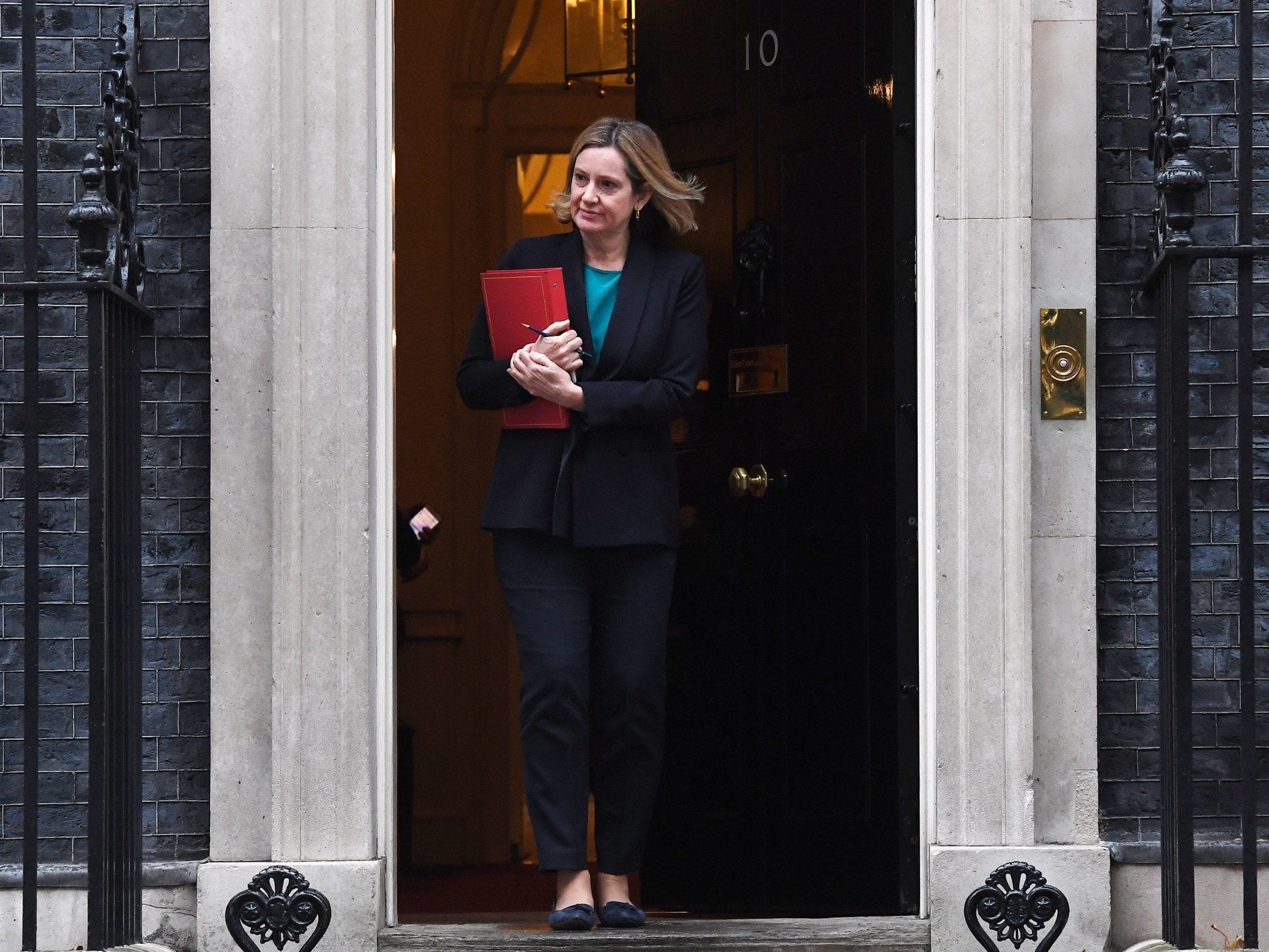The Top 10: Quickest Returns to Cabinet
In a change to scheduled programmes, a list of the shortest spells away from the top table, inspired by the return of Amber Rudd to government after six and a half months


Your support helps us to tell the story
From reproductive rights to climate change to Big Tech, The Independent is on the ground when the story is developing. Whether it's investigating the financials of Elon Musk's pro-Trump PAC or producing our latest documentary, 'The A Word', which shines a light on the American women fighting for reproductive rights, we know how important it is to parse out the facts from the messaging.
At such a critical moment in US history, we need reporters on the ground. Your donation allows us to keep sending journalists to speak to both sides of the story.
The Independent is trusted by Americans across the entire political spectrum. And unlike many other quality news outlets, we choose not to lock Americans out of our reporting and analysis with paywalls. We believe quality journalism should be available to everyone, paid for by those who can afford it.
Your support makes all the difference.Amber Rudd returned to the cabinet after 201 days, coincidentally leaving from and returning to the same jobs as David Blunkett 13 years earlier: from home secretary to work and pensions. Matt Smith asked: “What’s the shortest gap between exiting and re-entering the cabinet?” Here are (I think) the shortest gaps since 1900.
1. Clement Attlee, Herbert Morrison and Ernest Bevin, Labour ministers in the wartime coalition, resigned in May 1945 when the war (in Europe) and the coalition ended, and returned in July after winning the election, after 64 days. Thanks to Richard Olszewski.
2. James Brokenshire, out of the Northern Ireland Office to have treatment for lung cancer, and back as housing and local government secretary 112 days later in April this year (taking Sajid Javid’s post when he was promoted to replace Rudd). Thanks to Anthony Wells.
3. David Blunkett: 142 days in 2004-05. From Anthony Wells and Allan Holloway.
4. Peter Brooke resigned as Northern Ireland secretary after singing on Irish TV on the day seven were murdered by the IRA in 1992, but came back as national heritage secretary 165 days later. Thanks to James M.
5. Samuel Hoare resigned as foreign secretary over the secret deal with Pierre Laval, French foreign minister, to partition Abyssinia in December 1935. He returned as first lord of the admiralty 170 days later. Thanks to Allan Holloway.
6. Hugh Dalton resigned as chancellor of the exchequer after leaking Budget secrets on his way into the chamber in 1947; came back as chancellor of the Duchy of Lancaster 200 days later. Allan Holloway again.
7. Amber Rudd: 201 days.
8. Edwin Montagu left cabinet in May 1915, and returned to the same post, chancellor of the Duchy of Lancaster, in January 1916 after 231 days. He then left cabinet again in December 1916, returning as secretary of state for India in July 1917 after 219 days. Unusual double case from Mr Memory.
9. Austen Chamberlain, who was out for 275 days between his resignation as secretary of state for India in July 1917, following his criticism of the Mesopotamian campaign (see no 8), and his appointment as minister without portfolio the following year. Thanks again to Allan Holloway.
10. Peter Mandelson: 292 days between resigning as trade secretary over his home loan from fellow minister Geoffrey Robinson in December 1998 and his return as Northern Ireland secretary in October 1999. Then had to wait seven years and eight months from his resignation from that post in 2001 to his return as business secretary under Gordon Brown in October 2008.
Not quite: George Young, who left cabinet as leader of the Commons in 2012 and was brought back to government 45 days later as chief whip when Andrew Mitchell resigned over plebgate – but as chief whip he was entitled to attend cabinet but was not a full member.
Paul T Horgan asked about the reverse, the longest interval between offices, and started with Winston Churchill, out of the cabinet between 1929 and 1939. Allan Holloway came up with a longer gap: William Wedgwood Benn, 14 years from being secretary of state for India in 1931 to secretary of state for air (as Viscount Stansgate) in 1945. He also noted two even longer gaps in the 19th century: Charles James Fox, 23 years between his second and third terms at the Foreign Office, 1783 to 1806; and Earl Grey, 23 years 242 days between resigning as foreign secretary in 1807 and returning as prime minister in 1830.
Next week: Unlikeliest cover versions, such as Slade’s version of “Nights in White Satin”
Coming soon: Worst deals in history, after Nigel Farage described the draft Brexit deal thus
Your suggestions please, and ideas for future Top 10s, to me on Twitter, or by email to top10@independent.co.uk
Join our commenting forum
Join thought-provoking conversations, follow other Independent readers and see their replies
Comments